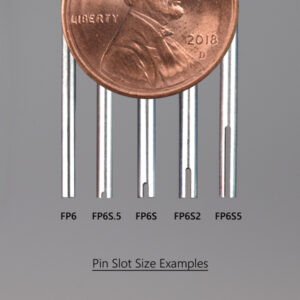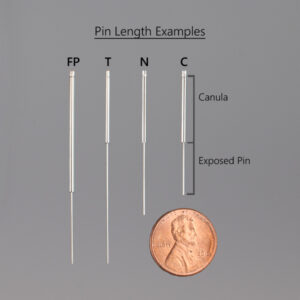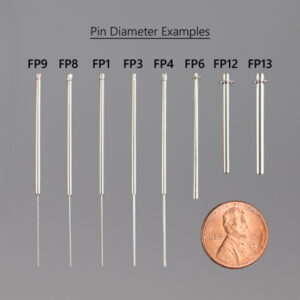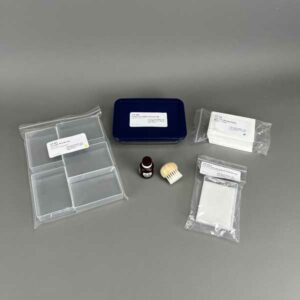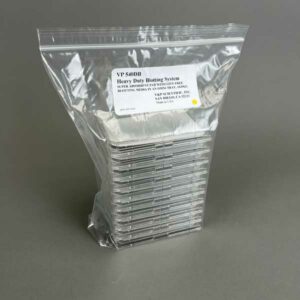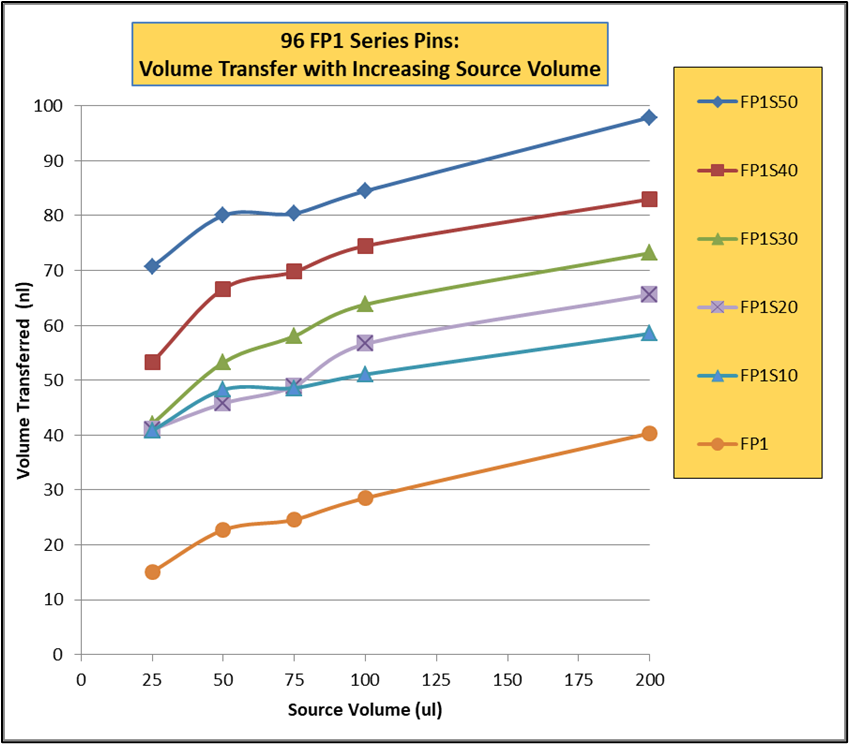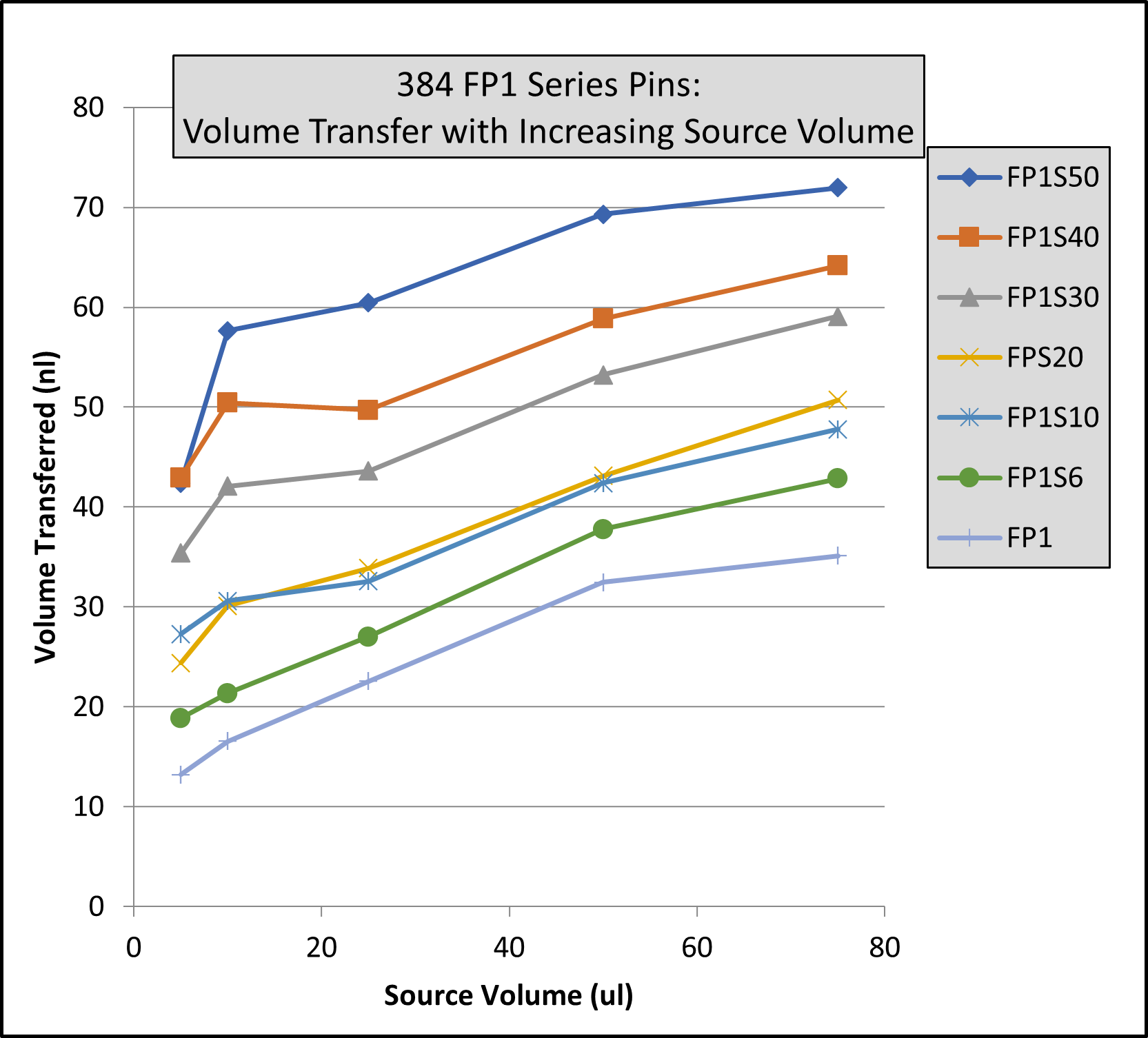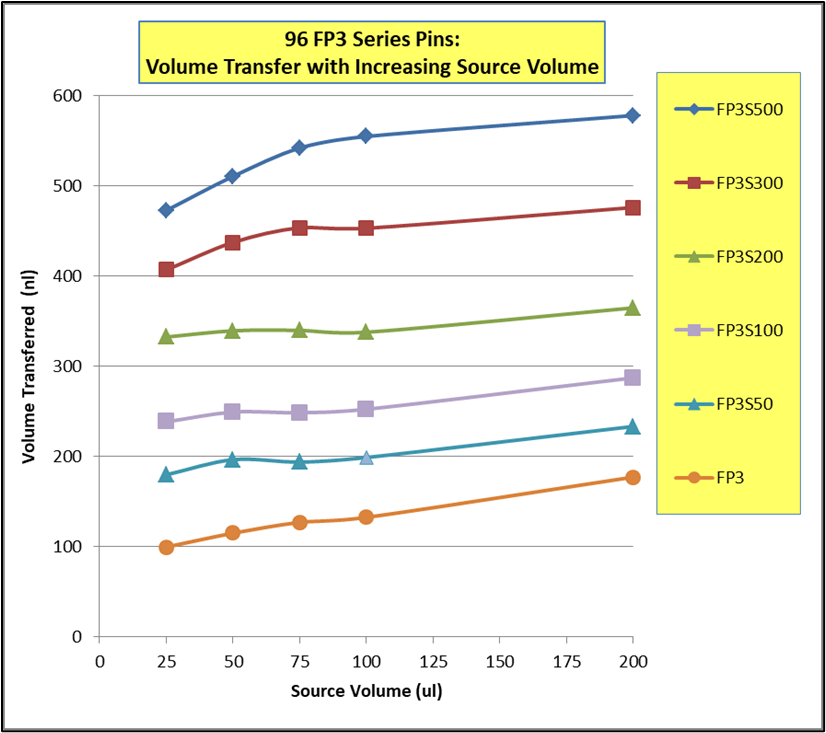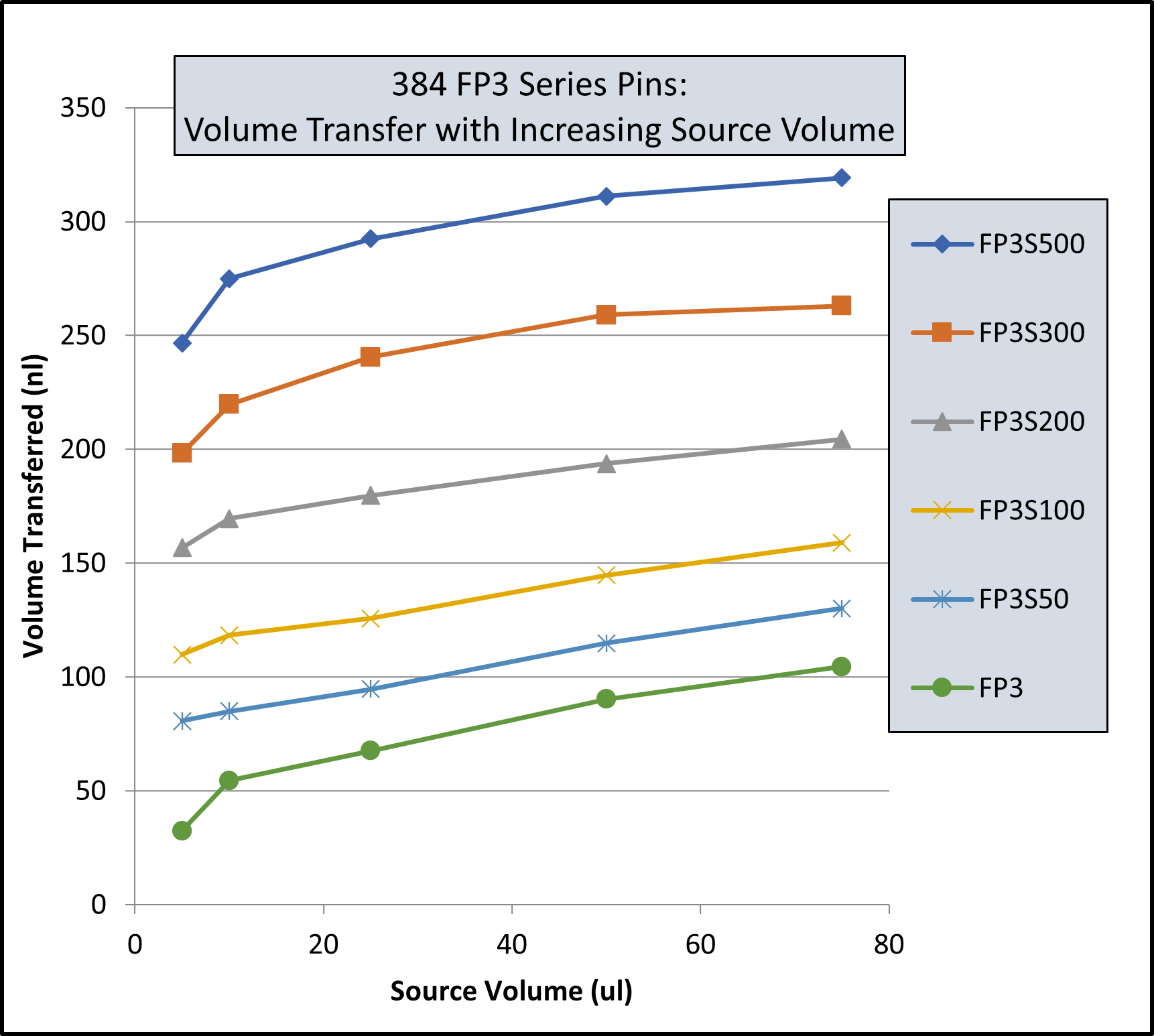PIN, FLOATING, E-CLIP, Stainless Steel, 5000nL-Slot, 1.58mm Diameter, 22.5mm Exposed Length, 33.3mm Total Length
FP6S5
PIN, Floating, E-CLIP Style, 5000nL Slot Tip, 1.58mm Diameter
| Pin Type | E-Clip Style |
|---|---|
| Pin Tip | Slot |
| Slot Size | 5000nL |
| Transfer Volume | ~5000nL |
| Pin Diameter | 1.58mm |
| Exposed Pin Length | 22.5mm |
| Total Pin Length | 33.3mm |
| Pin Series | FP6 Series |
| Pin Application | Liquid-To-Dry, Liquid-To-Liquid |
| Material | Stainless Steel |
| Pin Coating | Passivated Stainless Steel |
E-Clip Pins Overview
E-Clip pins are fixtured with an E-Clip in a groove at one end of the pin. These pins are either 1.58 mm, 2.36 mm, 3.18 mm, or 4.77 mm in diameter. The larger diameter pins carry more liquid and are preferred by scientists inoculating yeast onto agar plates. We offer pins of longer lengths for scientists using deep well blocks. The FPFS2 pins have an E-Clip groove part way down the shaft to allow it to be used as a spring-loaded floating pin, useful in sampling frozen specimens. We offer multiple styles of E-clip Pins: the FP pin which has a chamfered tip leading to a smaller flat spot (0.381mm) and the FP6 which has the chamfer cut off and delivers a larger drop of inoculum. The FP pin delivers a smaller amount of liquid due to the smaller flat spot on the end of the pin. It is well suited for making high-density arrays on membranes and agar surfaces. The flat tip FP6 pins are used to transfer larger volumes of liquid and the FP11A, FP12, FP12A, and FP13 pins, which transfer the largest volumes, are used by customers transferring yeast to agar plates. All the E-Clip pins (FP, FP6, FPAM, FPFS2, FP11A, FP12, FP12A, and FP13) can be used with the Robot style double floating frames or with double float frames that have been converted to manual Multi-Blot replicators with our conversion kits (BGPK, BGPK-E or BGPKL).
Robotic Pin Tool Applications Using 3nL to 5uL of Liquid
For:
- Drugs, Antibiotics, Receptors, Ligands, Activity on cultured cells, Mutants, Recombinant clones, Hybridomas,
- Nucleic acids, DNA, cDNA, RNA, mRNA, RNAi, PCR products
- Cells, Fungi, Yeast, Bacteria, Viruses, Plasmids
Application – Transfer and replicate cultures and genomic libraries
For:
- Cells, Fungi, Yeast, Bacteria, Viruses, Plasmids
Application – Assays on Membranes
For:
- Construction of high-density Nucleic Acid Arrays;
- Inexpensive Hand-held Device for the Construction of High-Density Nucleic Acid Arrays;
- NIH Microarray Project Protocols
For:
- Gene expression profiles;
- Differential gene expression profiles between normal and cancerous tissues;
- RNA and DNA sequence analysis of gene expression;
- In Vivo Gene Expression Profile Analysis of Human Breast Cancer Progression;
- Differential Gene Expression Mapping and functional analysis of receptor-like protein kinases;
- Differential Gene Expression between Normal and Tumor-derived Ovarian Epithelial Cells;
- Changes in Gene Expression of Leaves in Sugarcane; Expressed Sequence Tags (EST) in cDNA;
For:
- Mapping and Functional Analysis of protein kinases;
- Development of DNA-Based Macroarray for the Detection and Identification of species;
- Physical Map of a Chromosome in Nectria haematococca Mating Population VI;
- Development of a DNA-Based Macroarray for the Detection and Identification of Amanita Species;
- A High Through-put Procedure for Capturing Microsatellites from Complex Plant Genomes;
For:
- Oligonucleotide Fingerprinting of Ribosomal RNA Genes;
- Oligonucleotide fingerprinting of rDNA genes;
- Characterization of fecal microbiota by oligonucleotide fingerprinting of rDNA genes;
Application – Assays on Glass Slide Arrays
For:
- Drug Resistance;
- Measurement of specific proteins in human cumulus cells using reverse phase protein array;
- Development of a universal peptide-binding protein for simultaneous assay of kinases;
- Specific proteins using reverse phase protein arrays; Micro-immunoassay Using a Protein Chip;
For:
- DNA – sequence analysis of gene expression;
- RNA – sequence analysis of gene expression;
- cDNA – sequence analysis of gene expression
Application – Assays on microplates for Multiplexing
For:
- DNA; RNA; Protein; Antibody; Antigen
Application – Assays on agar
For:
- Functional Genomic screens;
- Anti-microbial agents;
- Antibiotic resistance;
- Drug Resistance;
- Up-regulated proteins;
- Toxicity;
- Antisense RNA;
- Mutant strains;
- Receptors;
- High Throughput Reverse Genetic Screens;
- Genetic Architecture of Biofilm formation;
For:
- Genetic Determinants of swimming motility;
- Saccharomyces Gene Deletion project;
- Synthetic Genetic array (SGA) analysis;
- Biologically active small molecules and the Yeast Halo Assay;
- Colony arraying with the VIRTEK CAPS system;
- Deletion of duplicate genes;
For:
- Discovery of Biologically Active Small Molecules Using a High-Throughput Yeast Halo Assay;
- A Halo-Based Potency Prediction Algorithm for High-Throughput Detection of Antimicrobial Agents;
- Functional Genomic Yeast Screen to Identify Pathogenic Bacterial Proteins;
- Genome-Wide Screen in Francisella novicida for Genes Required for Pulmonary and Systemic Infection;
- Harnessing Hsp90 function as a therapeutic strategy for fungal infectious disease
For:
- Detection of Different Cellular and Gene Expression Phenotypes;
- Drug Resistance of the Fungal Pathogen Candida albicans;
- Detecting TDP-43 toxicity in yeast;
- A genome-wide inducible phenotypic screen identifies antisense RNA constructs silencing Escherichia coli essential genes;
- High-Throughput Reverse Genetic Screening.
Application – Picking Colonies on Agar and Transferring to liquid culture
For:
- Fungi; Yeast; Bacteria;
Application – Yeast Mating Studies on agar
For:
- Yeast genetics
Miscellaneous Applications
- Resuspend settled material or organisms;
- Reformat libraries (96-to-384, 384-to-1536, 1536-to-384, 384-to-96);
- Wounding Tissue Culture Monolayers with Pin Tools;
- Dysfunctional Connections Between the Nucleus and the Actin and Microtubule Networks in Laminopathic Models;
- A high-throughput cell migration assay using scratch wound healing, a comparison of image-based readout methods;
- A Multi-domain Fragment of Nogo-A Protein Is a Potent Inhibitor of Cortical Axon Regeneration via Nogo Receptor;

